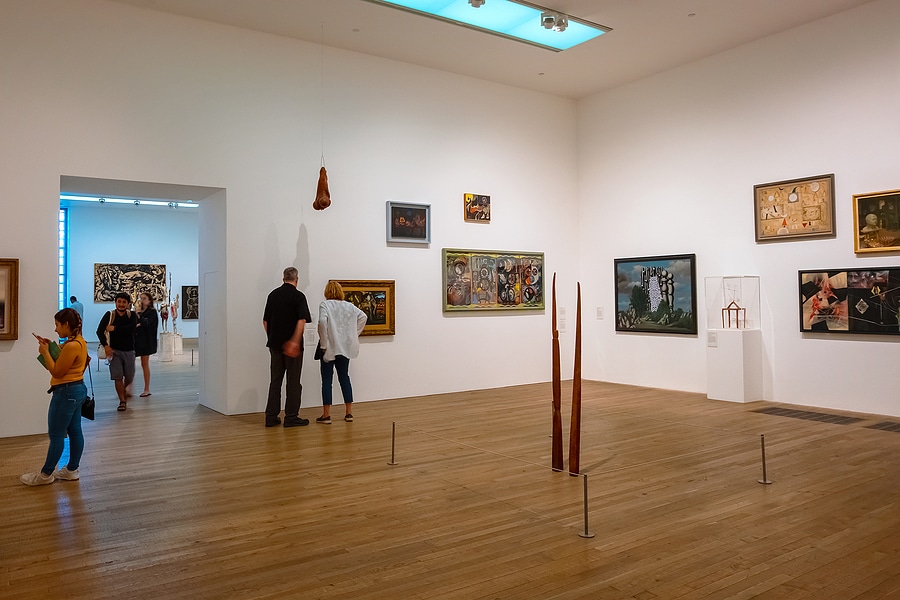Two major retrospective exhibitions featuring the work of the German artist Käthe Kollwitz will open this year at the Städel Museum, Frankfurt, (20 March-9 June) and the Museum of Modern Art, New York, (31 March-20 July). She was a figurative artist who was committed to highlighting suffering and injustice, and her work has arguably been underappreciated.
Kollwitz was born in the Prussian city of Königsberg (now Kaliningrad, Russia) in 1867. Her father, Carl Schmidt, became aware of his daughter’s artistic talent early in life, and he ensured that she was educated to become an artist. Initially. She trained as a painter but soon found a preference for figurative drawing and printmaking.
Her grandfather was a Lutheran pastor who was expelled from the official state church for his radical views, and founded his own independent congregation. Kollwitz’s early education and artworks were influenced by her grandfather’s views on socialism and religion, and she would have a lifelong commitment to represent voiceless people in her art.
Writing in her diary, Kollwitz commented, “I felt that I have no right to withdraw from the responsibility of being an advocate. It is my duty to voice the sufferings of men, the never-ending sufferings heaped mountain-high. This is my task, but it is not an easy one to fulfil.”
Among her most famous works are her cycle of prints The Weavers (1893-1897) and the Peasant War, (1902-1908) which are considered to be unflinching portrayals of the struggles of life and war for the working classes. Her work was honest about human brutality, injustice and suffering, but it also showed a spirit of resistance, defiance, and hope.
In 1891, Kollwitz (then Schmidt) married a Berlin doctor named Karl Kollwitz, and she gave birth to her first son Hans a year later. A second son, Peter, was born in 1896. Peter was killed aged just 18 in Belgium, shortly after signing up as a volunteer for the First World War effort.
The loss of her son deeply affected the artist, and she went on to become a pacifist. The subject of the senseless brutality, loss and injustice of war for ordinary people would become a profound theme of her later work. She often focused on bereaved mothers and children, and gave an expression to the female point of view that was sidelined during the war years.
In 1927 Curt Glaser wrote in the Berliner Börsen-Courier: “If one were to name the quality that distinguishes Käthe Kollwitz as an artist above all others, it is her character. Rarely has an artist, from the very beginning, charted her own path so surely and adhered to it so purposefully over decades as this woman has.”
“She is a remarkable creator driven by her calling to struggle for social justice and a better world for society’s lower classes.”
Kollwitz’s figurative work is largely monochrome and makes use of line and contrasts of light and dark tone for its expressive power. Her naturalistic and direct approach was viewed as somewhat out of step with the contemporary fashion for abstraction and impressionism, and this may be why she has not been given her full due as an artist so far.
The Art Newspaper reports that Kollwitz, who died aged 77 just before the end of World War Two, is now the subject of two significant exhibitions of her work for the first time in over 30 years.
The Museum of Modern Art (MOMA) in New York will display about 120 works spanning the artist’s career from the early 1890s to the early 1940s, and will include examples of prints, drawings, and sculptures.
The curator of the MOMA exhibition is Starr Figura, who said that the work of the previously underappreciated artist was becoming more resonant with modern audiences, perhaps because of the conflict and uncertainty that the world is facing today, and also because of shifting social attitudes and awareness.
She commented: “She was promoting a vision of compassion as a way to respond to injustice and horror, and she was minimised and even belittled for that, but it’s something we talk about now.”
Hopefully these two exhibitions will help to show the world the humanity and technical brilliance of Kollwitz’s work, which is more relevant than ever today.
If you have an inspiring piece of artwork to display, please visit our framing shop in north London for friendly and expert advice.
